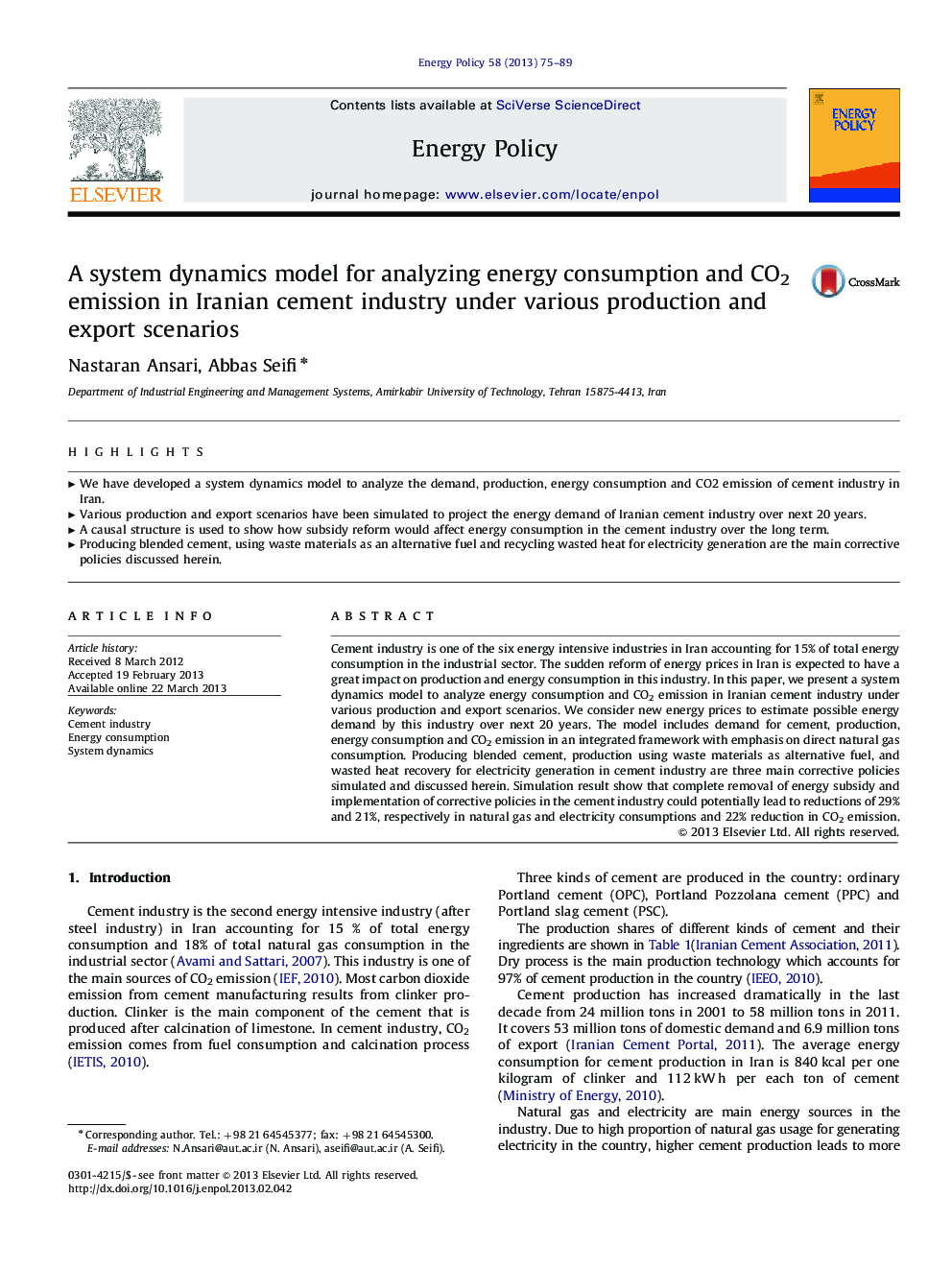| کد مقاله | کد نشریه | سال انتشار | مقاله انگلیسی | نسخه تمام متن |
|---|---|---|---|---|
| 995530 | 1481300 | 2013 | 15 صفحه PDF | دانلود رایگان |

Cement industry is one of the six energy intensive industries in Iran accounting for 15% of total energy consumption in the industrial sector. The sudden reform of energy prices in Iran is expected to have a great impact on production and energy consumption in this industry. In this paper, we present a system dynamics model to analyze energy consumption and CO2 emission in Iranian cement industry under various production and export scenarios. We consider new energy prices to estimate possible energy demand by this industry over next 20 years. The model includes demand for cement, production, energy consumption and CO2 emission in an integrated framework with emphasis on direct natural gas consumption. Producing blended cement, production using waste materials as alternative fuel, and wasted heat recovery for electricity generation in cement industry are three main corrective policies simulated and discussed herein. Simulation result show that complete removal of energy subsidy and implementation of corrective policies in the cement industry could potentially lead to reductions of 29% and 21%, respectively in natural gas and electricity consumptions and 22% reduction in CO2 emission.
► We have developed a system dynamics model to analyze the demand, production, energy consumption and CO2 emission of cement industry in Iran.
► Various production and export scenarios have been simulated to project the energy demand of Iranian cement industry over next 20 years.
► A causal structure is used to show how subsidy reform would affect energy consumption in the cement industry over the long term.
► Producing blended cement, using waste materials as an alternative fuel and recycling wasted heat for electricity generation are the main corrective policies discussed herein.
Journal: Energy Policy - Volume 58, July 2013, Pages 75–89